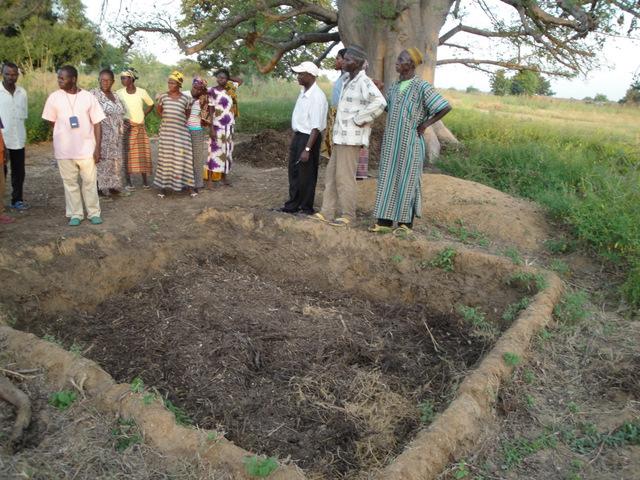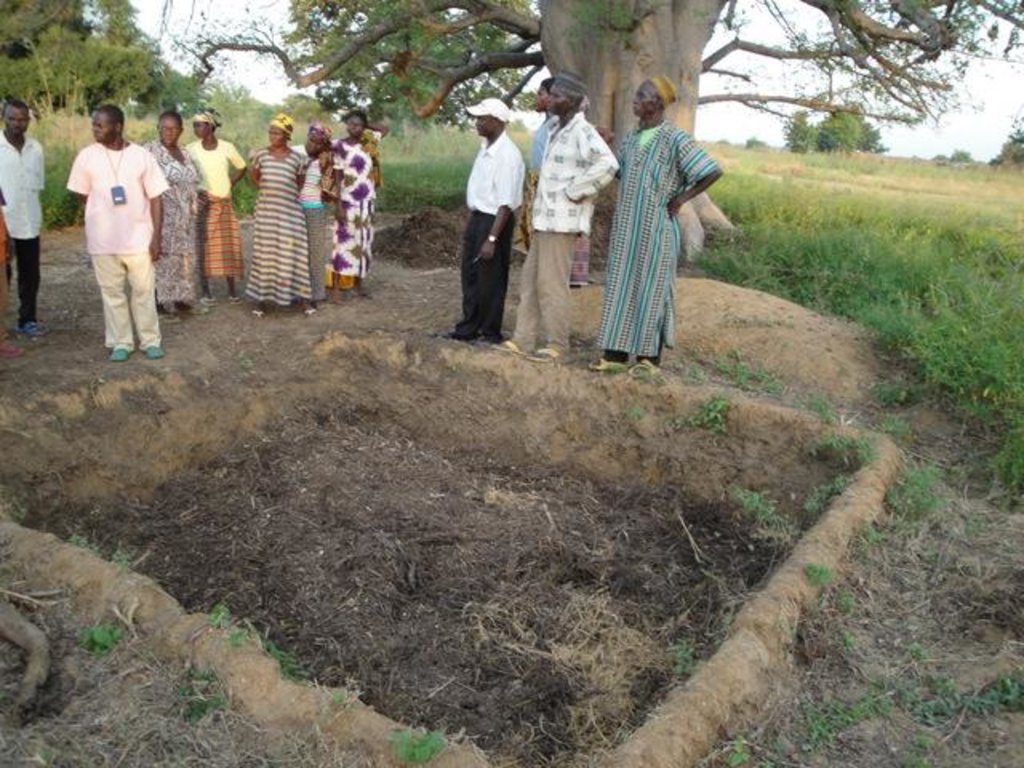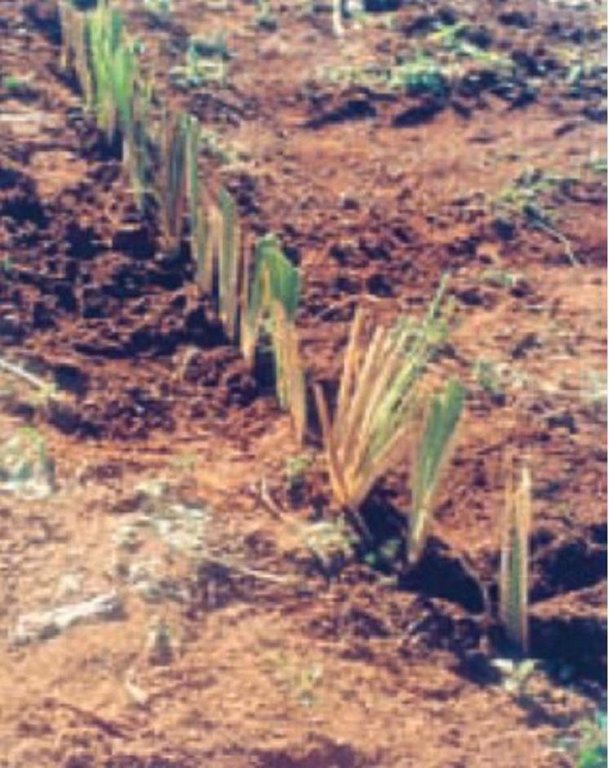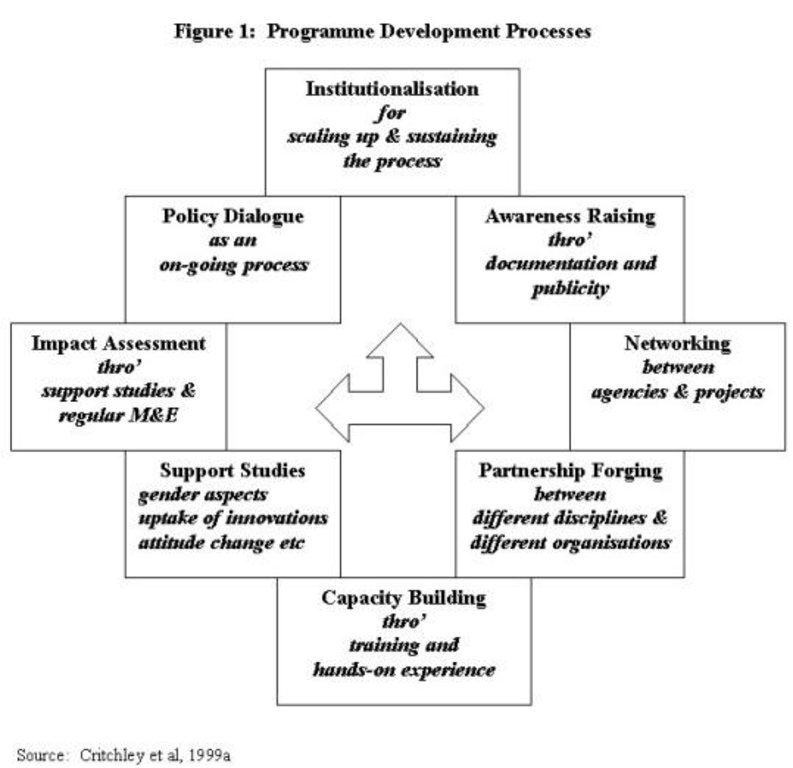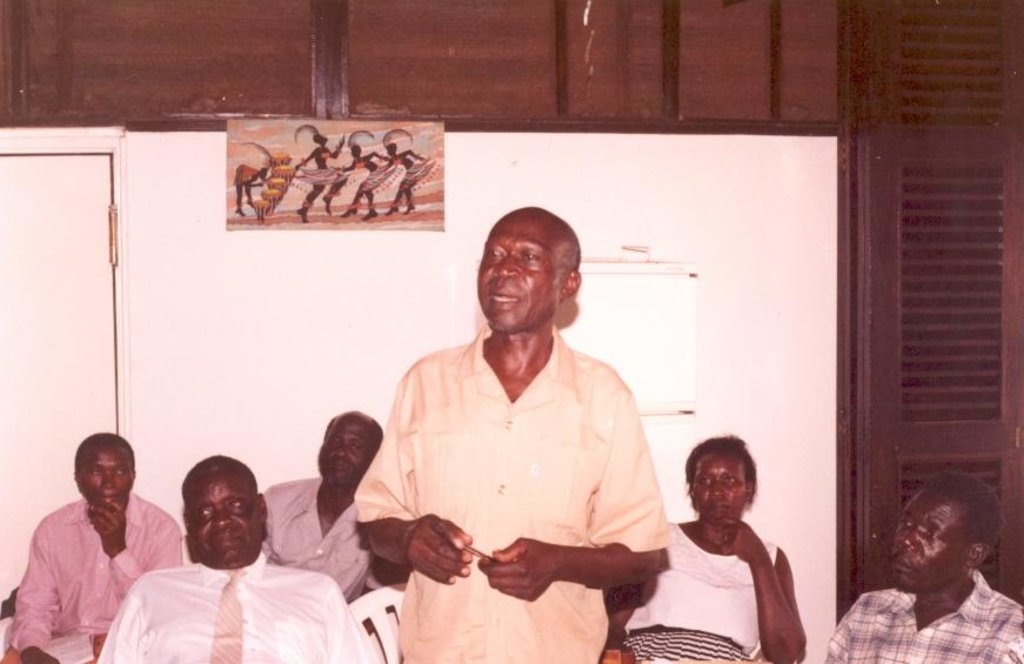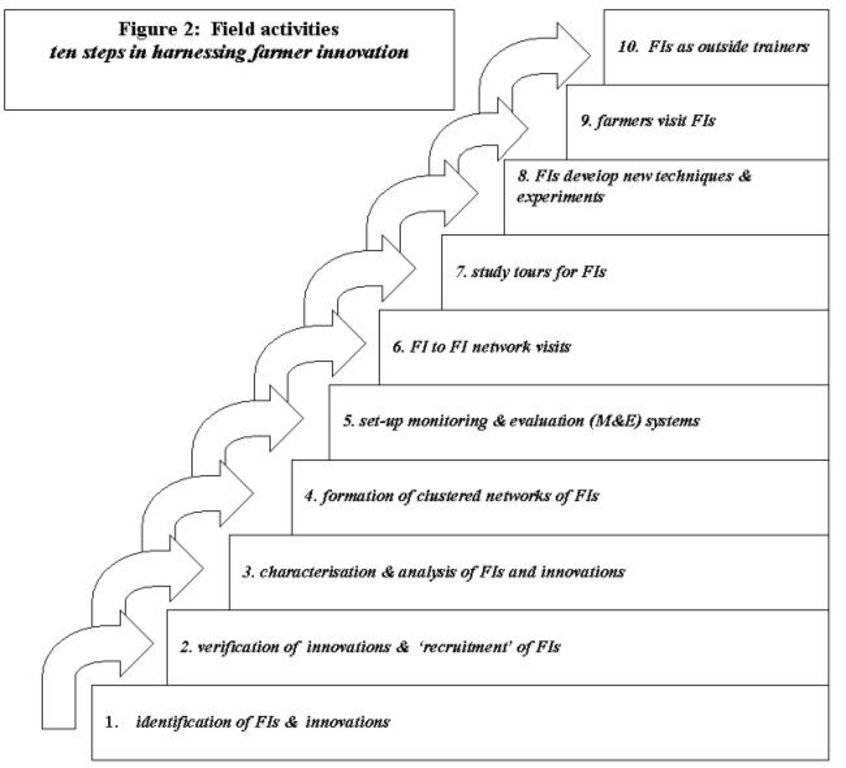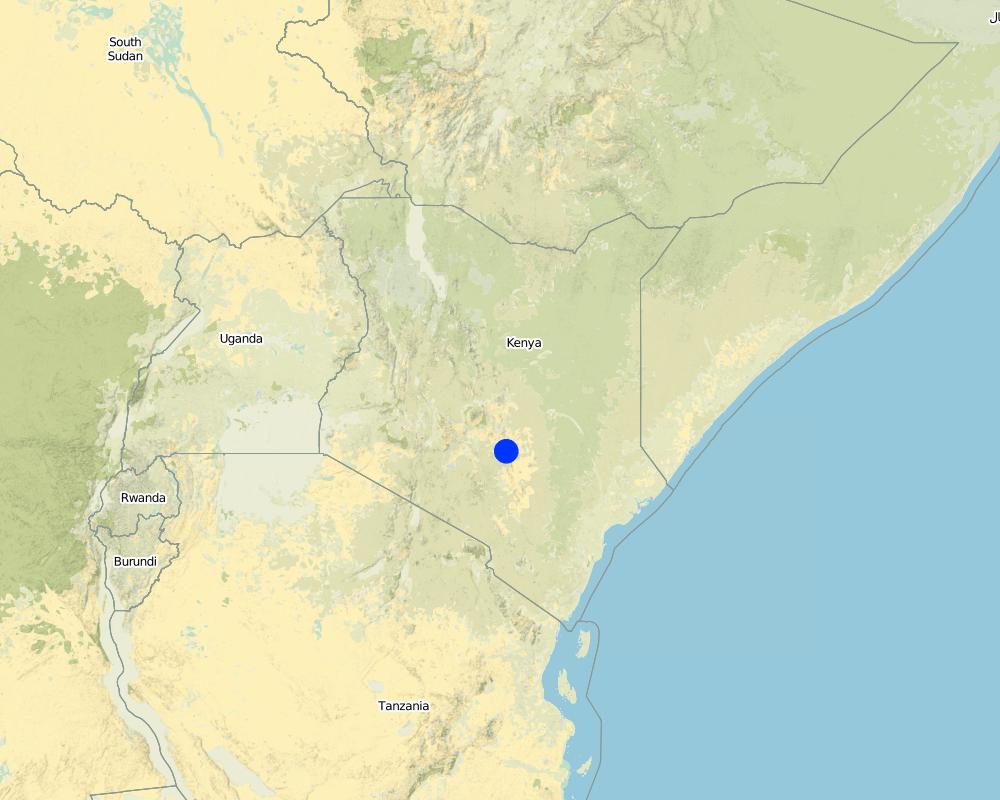Promoting Farmer Innovation [肯尼亚]
- 创建:
- 更新:
- 编制者: William Critchley
- 编辑者: –
- 审查者: Fabian Ottiger
approaches_2412 - 肯尼亚
查看章节
全部展开 全部收起1. 一般信息
1.2 参与方法评估和文件编制的资源人员和机构的联系方式
SLM专业人员:
有助于对方法进行记录/评估的机构名称(如相关)
Food and Agriculture Organization of the United Nations (FAO) - 意大利1.3 关于使用通过WOCAT记录的数据的条件
编制者和关键资源人员接受有关使用通过WOCAT记录数据的条件。:
是
2. SLM方法的描述
2.1 该方法的简要说明
The PFI approach seeks to build on technical initiatives - innovation in the local context - developed by farmers themselves in dry/marginal areas where the conventional approach of transfer of technology from research to extension agents and then on to farmers has so often failed.
2.2 该方法的详细说明
该方法的详细说明:
Aims / objectives: The objective of PFI is to stimulate technical innovation, in the field of land management, by farmers. The approach basically comprises indentifying, validating and documenting local innovations/initiatives. Simple monitoring and evaluation systems are set up amongst those innovative farmers who are willing to co-operate. Through contact with researchers, extra value is added to these techniques where possible.
Methods: Farmer innovators are brought together to share Ideas. Finally, best-bet technologies, in other words thos that are considered to be good enough to be sharedd, are disseminated through farmer-to-farmer extension. This takes two forms. First, farmers are brought to visit the innovators in their farms. Secondly, farmer innovators are used as teachers/trainers to visit groups of farmers - including FAO's farmer field schools in some cases. Only in this second form of extension is an allowance payable to the innovator. A ten-step field activity methodology has been developed.
Role of stakeholders: At programme level, there is capacity building of in-line extension and research staff, who are the main outside actors in the programme. In each of the countries the approach has been implemented through a government ministry and with NGOs in the field. The principle, and practice, is not to create seperate project enclaves, but to work through existing personnel, sharing buildings and vehicles that are already operational in the area. A programme development process methodological framework shows how the ultimate goal of institutionalisation can be achieved. PFI's first phase, completed in 2000, was financed by the Government of The Netherlands, through UNDP, and was active in Kenya, Tanzania and Uganda.
2.3 该方法的照片
2.5 采用该方法的国家/地区/地点
国家:
肯尼亚
区域/州/省:
Mwingi District
Map
×2.6 该方法的开始和终止日期
注明开始年份:
1996
终止年份(若不再采用该方法):
2000
2.7 方法的类型
- 基于项目/方案
2.8 该方法的主要目的/目标
The Approach focused mainly on SLM with other activities (better land husbandry practices (eg animal husbandry/ crop selection))
Improve rural livelihoods through an increase in the rate of diffusion and appropriate SLM/water harvesting technologies, promotion of farmer-farmer exchange, capacity building of farmers and supporting organisations, promotion of policy dialogue
The SLM Approach addressed the following problems: Poor supply of relevant recommendations from research for small-scale farmers in marginal areas, poor delivery of SLM technologies to farmers, lack of motivation of research and extension staff, isolation of promising innovative SLM ideas which address low crop yields, land degradation and poverty, lack of exchange of innovative knowledge.
2.9 推动或妨碍实施本办法所适用的技术的条件
机构设置
- 阻碍
lack of motivation of research and extension institutions
Treatment through the SLM Approach: bringing them together with farmer innovators
法律框架(土地使用权、土地和水使用权)
- 阻碍
The existing land ownership, land use rights / water rights hindered a little the approach implementation access to land for women was a problem that inhibited women to innovate
其他
- 阻碍
spread of knowledge and ideas
Treatment through the SLM Approach: networking of farmers (+extension staff and researchers)
3. 相关利益相关者的参与和角色
3.1 该方法涉及的利益相关者及其职责
- 当地土地使用者/当地社区
Existing groups of land users
Men tend to 'volunteer' themselves as innovators and to ignore their wives. This led to (1) gender studies and (2) gender sensitisation workshops to try to overcome the problem(s)
- 国家政府(规划者、决策者)
International specialists in collaboration with/ after discussions with national specialists and land users
- 国际组织
3.2 当地土地使用者/当地社区参与该方法的不同阶段
| 当地土地使用者/当地社区的参与 | 指定参与人员并描述活动 | |
|---|---|---|
| 启动/动机 | 被动 | public meetings, interviews/questionnaires, workshops/seminars, rapid/participatory rural appraisal |
| 计划 | 互动 | rapid/participatory rural appraisal, interviews/questionnaires, workshops/seminars, public meetings, |
| 实施 | 互动 | Mainly: responsibility for minor steps; partly: responsibility for major steps |
| 监测/评估 | 互动 | Mainly: public meetings, measurements/observations; partly: workshop/seminars; |
| Research | 互动 | Mainly: public meetings, measurements/observations; partly: workshop/seminars; |
3.3 流程图(如可用)
3.4 有关SLM技术选择的决策
具体说明谁有权决定选择要实施的技术:
- 主要是土地使用者,由SLM专家提供支持
解释:
land user driven (bottom-up). farmers developed the technologies; field staff selected them
Decisions on the method of implementing the SLM Technology were made by mainly by land users supported by SLM specialists. land user driven (bottom-up).
4. 技术支持、能力建设和知识管理
4.1 能力建设/培训
是否为土地使用者/其他利益相关者提供培训?:
是
明确受训人员:
- 土地使用者
- SWC specialists, extensionists/trainer
培训形式:
- 农民对农民
- 公开会议
- 课程
涵盖的主题:
1. Training in presentation skills for farmer innovators 2. Facilitation of field days where innovators/ extension staff could present jointly (so farmers trained thereby)
4.2 咨询服务
土地使用者有权使用咨询服务吗?:
是
指明是否提供了咨询服务:
- 在土地使用者的土地上
说明/注释:
Name of method used for advisory service: 'Farmer Innovation Approach'; Key elements: Identify Fis, Form networks of FIs groups which meet, Bring farmers to see 'best-bet' innovations; 1) Advisory service was carried out through: government's existing extension system, non-governmental agency 2) Advisory service was carried out through: government's existing extension system, non-governmental agency; Extension staff: mainly government employees
Advisory service is quite adequate to ensure the continuation of land conservation activities
4.3 机构强化(组织发展)
是否通过这种方法建立或加强了机构?:
- 是,适度
具体说明机构的强化或建立程度:
- 本地
具体说明支持类型:
- 能力建设/培训
4.4 监测和评估
监测和评估是该方法的一部分吗?:
是
注释:
bio-physical aspects were regular monitored
technical aspects were regular monitored
socio-cultural aspects were ad hoc monitored
economic / production aspects were regular monitored
area treated aspects were ad hoc monitored
no. of land users involved aspects were ad hoc monitored
There were few changes in the Approach as a result of monitoring and evaluation: e.g. Better integration with government services/ system for technical backstopping and extension
4.5 研究
研究是该方法的一部分吗?
是
明确话题:
- 技术
提供进一步的细节,并指出是谁做的研究:
research was slow to begin activities in this phase but supposed to be a key pillar in this farmer/ research/ extension linkage
Research was carried out on-farm
5. 融资和外部物质支持
5.1 该方法中SLM组成部分的年度预算
如果不知道准确的年度预算,请给出一个范围:
- 100,000-1,000,000
注释(例如主要的资助来源/主要捐助者):
Approach costs were met by the following donors: international (Dutch Government): 60.0%; government (national): 20.0%; local community / land user(s) (-): 20.0%
5.3 对特定投入的补贴(包括劳动力)
- 农业
| 具体说明哪些投入得到了补贴 | 程度如何 | 对补贴做出具体说明 |
|---|---|---|
| 种子 | 部分融资 | |
如果土地使用者的劳动力是一项重要的投入,那么是不是:
- 自愿
5.4 信用
是否根据SLM活动的方法给予信用值?:
否
6. 影响分析和结论性陈述
6.1 方法的影响
该方法是否帮助土地使用者实施和维护SLM技术?:
- 否
- 是,很少
- 是,中等
- 是,支持力度很大
Innovative land husbandry technologies of other farmers
该方法是否改善了阻碍SLM技术实施的土地使用权/用户权问题?:
- 否
- 是,很少
- 是,中等
- 是,支持力度很大
Gender sensitisation training may have helped The problem is unlikely to be overcome in the near future.
Did other land users / projects adopt the Approach?
- 否
- 是,很少
- 是,中等
- 是,支持力度很大
1. GTZ in Kenya are adopting the PFI approach widely; 2. FAO's farmer field schools are joining hands with PFI in Kenya 3. INADES Tanzania adopted the approach 4. Several organisations in Uganda have expressed an interest
- 否
- 是,很少
- 是,中等
- 是,支持力度很大
- 否
- 是,很少
- 是,中等
- 是,支持力度很大
6.3 方法活动的可持续性
土地使用者能否维持通过该方法实施的措施(无外部支持的情况下)?:
- 不确定
若否或不确定,请具体说明并予以注释:
There may be some groups of farmers who will continue to meet and exchange ideas but this approach basically depends on a continuation (long term) of the farmer/ extension/ research interaction
6.4 该方法的长处/优点
| 土地使用者眼中的长处/优势/机会 |
|---|
| Gives them confidence |
| Offers them new and viable ideas from their peers |
| 编制者或其他关键资源人员认为的长处/优势/机会 |
|---|
| Builds on local ideas (How to sustain/ enhance this strength: institutionalise the approach!) |
| Revitalises the extension service |
| Is attractive at all levels |
6.5 该方法的弱点/缺点以及克服它们的方法
| 土地使用者认为的弱点/缺点/风险 | 如何克服它们? |
|---|---|
| Research reluctant to respond to farmers' agenda | effort to convince researchers of benefits of joint research with farmers. |
| 编制者或其他关键资源人员认为的弱点/缺点/风险 | 如何克服它们? |
|---|---|
| Depends on individual flexibility and commitment, does not follow the conventional institutional chain of command | training in skills and methodologies. |
| Sometimes confers too much prestige on a particular group of favoured farmers | rotate farmers who are the focus of attention. |
7. 参考和链接
7.1 方法/信息来源
- 实地考察、实地调查
- 与土地使用者的访谈
7.2 参考可用出版物
标题、作者、年份、ISBN:
Promoting Farmer Innovation (1999) Critchley et alVideo (same name)
可以从哪里获得?成本如何?
RELMA, Nairobiditto
链接和模块
全部展开 全部收起链接
无链接
模块
无模块


